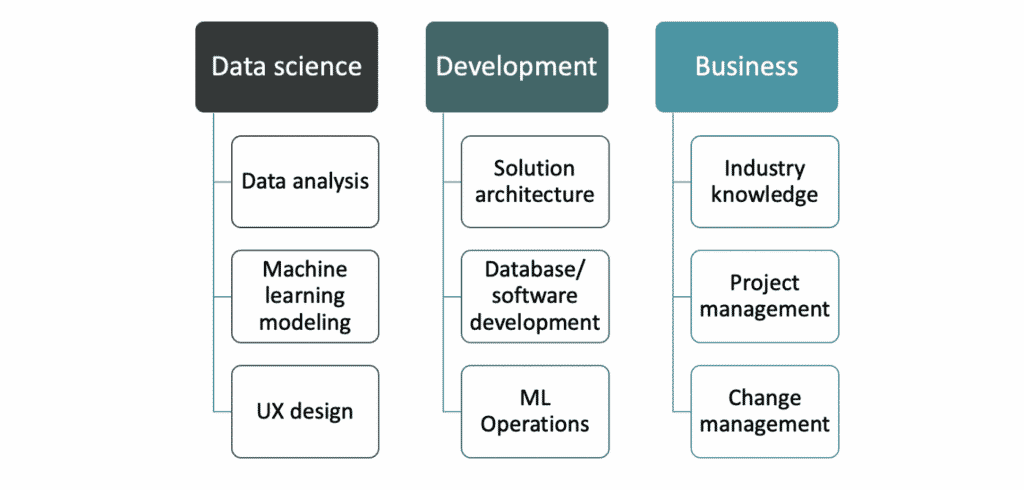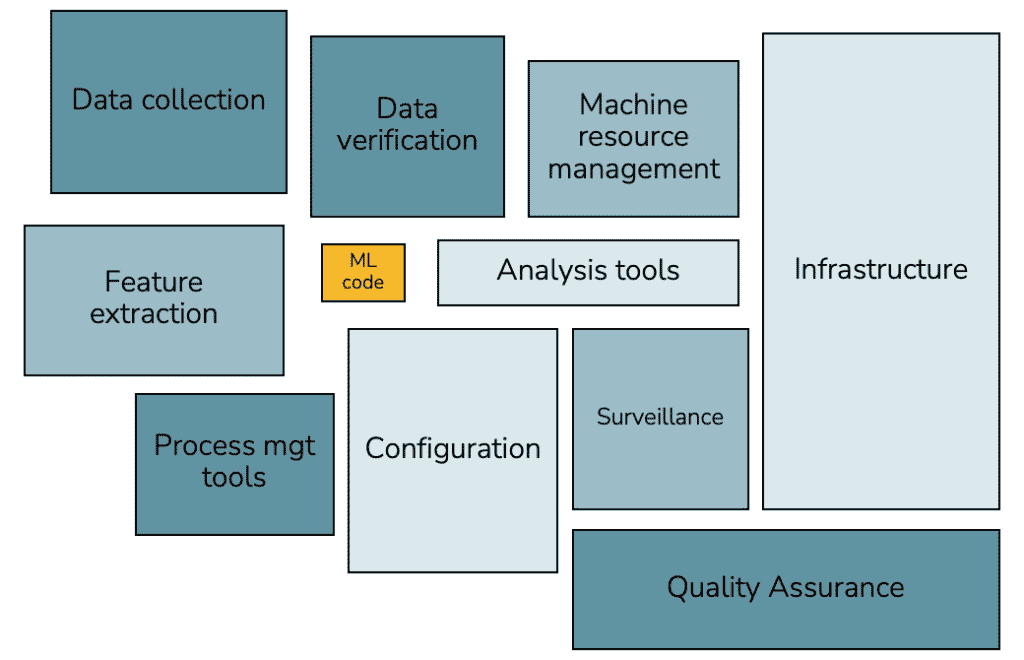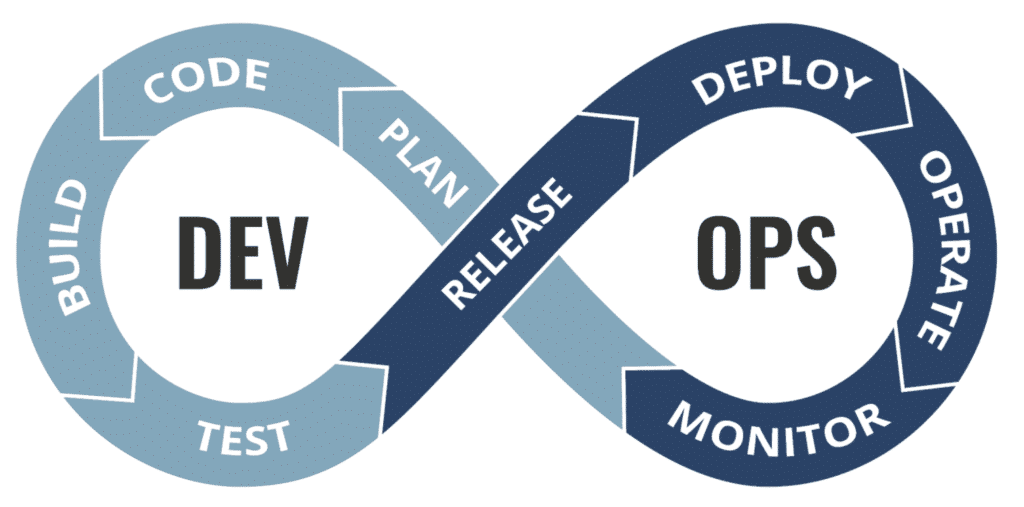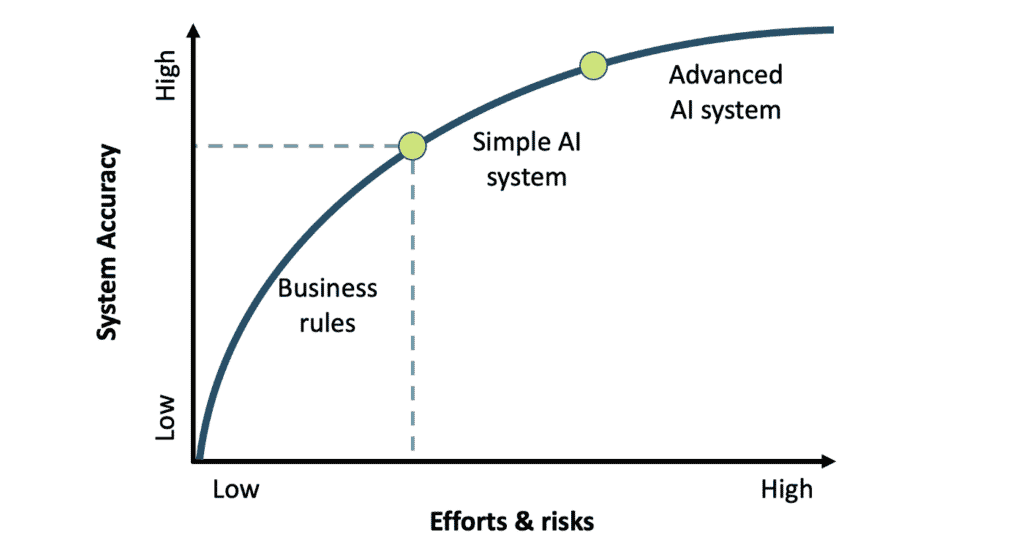Delivering an AI system is hard. This is why you need a high-performance team with complementary talents and skills. To achieve this, you need a high-performance team with complementary talents and skills.
What is the optimal team to deliver AI projects successfully? It is a complex question to answer. It will vary depending on the type of project and the type of organization you work for. Using the learnings I gathered from mentoring many companies in different industries, here are nine critical roles that make or break AI projects.
Based on my learnings and project delivery experience gained from coaching many companies in different industries, here are the nine essential roles to create and deliver an AI project.
An employee can fill multiple roles based on their skillset. The idea here is that your project team covers them all to maximize your chances for a successful project
Nine critical roles in an AI project team

Data science
Data science is a no-brainer discipline in an AI project. We constantly hear that a Data Scientist is the only role you need to build an AI solution. First, it is not, and second, many activities need to happen for an AI project to succeed. A single Data Scientist is not equipped to address them all. I don’t believe in unicorns.
I usually split data science activities into these 3 separate roles:
Data analysis:
Data is the oil of an AI system. It is paramount to properly analyze the data used to train the AI system. Without oil, it may permanently seize your engine altogether.
Machine learning (ML) modelling:
Once the data has been defined and cleaned, a machine learning model will be trained, validated, and tested to generate predictions. You can then experiment and hopefully incorporate your predictions into a system.
User Experience (UX) design:
UX design is one of the most overlooked parts of an AI system. In my opinion, it is so critical. How will the end-user access the output of the system? How do you make sure that they will understand and trust the results of the system? The UX designer can also work on the explainability of the model and translate it into an understandable non-technical language.
Development
Unfortunately, development is still underestimated. However, many hours of software development are required to develop and deploy an operational AI system. You will realize the number of non-machine-learning infrastructures, processes, and tools needed to have a functional solution.

You need specific expertise to operationalize AI and build a robust system around the data, machine learning models, and UX created by your data science-focused roles.
Solution architecture
As you can see in the figure above, many hardware and software elements are required to build a system. This skill set is critical to drawing the AI system’s exemplary software architecture to meet the end-user requirements.
Database and software development
Breaking news: an AI solution is a software solution. A specific one, but a software solution nonetheless. Hence, the robustness and efficiency requirements for databases, scripts, and APIs. If you only rely on Data Scientists to deliver an AI solution, you will be disappointed, considering that few Data Scientists master both software development and data science. Again I don’t believe in unicorns.
Solution operationalization
Solution operationalization: Solution operationalization for an AI solution is a combination of DevOps and MLOps. DevOps is a set of practices that aims to shorten the development life cycle and provide continuous delivery with high software quality. Comparatively, MLOps is the process of automating and productionalizing machine learning applications and workflows (Source: phdata).

Business
Any AI project within an organization should have strong business considerations, as technology cannot solve any problem unless it is aligned with the business reality.
Industry knowledge
This is the most critical role in an AI project. Yes, a non-technical role. Product Owner (or PO) is a common name for this role. A great PO can generate immediate benefits while mitigating risks by developing business rules and heuristics and shaping the AI project’s business requirements. The PO also ensures the project team learns industry knowledge critical to the AI solution and stays aligned with the business stakeholders throughout the project.
Pareto Principle in AI Delivery

Project management
Simply put, most of the problems you will encounter in an AI project can be dealt with if you manage the project right. Project Managers guide the team so that it delivers high-quality projects that meet the business requirements given the timelines and the budget. It’s a fine line to walk, so I suggest you look for experience when hiring a project manager.
Change management
You can build the better AI system in the history of humanity, but if no one uses it, you just lost an opportunity. And money. And time. Communication, training, and support during user testing are vital activities to ensure maximum adoption from stakeholders and end-users.
The success of a project
The 9 proposed roles cover the entirety of an AI project. Identifying who will occupy each of these roles at the beginning of the project increases the chances of success.
At Moov AI our project teams are typically composed of 5 colleagues who cover all of these roles and divide the tasks to be accomplished. As our teams are self-managed, they ensure that external stakeholders cover these roles if no one on the team has the skills to perform them.
Do you see other roles that should be covered in this article? Please feel free to comment above!

Olivier is co-founder and VP of decision science at Moov AI. He is the editor of the international ISO standard that defines the quality of artificial intelligence systems, where he leads a team of 50 AI professionals from around the world. His cutting-edge AI and machine learning knowledge have led him to implement a data culture in various industries.